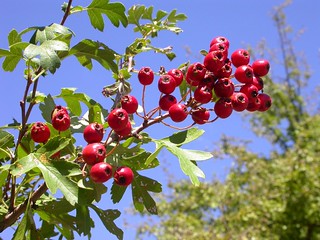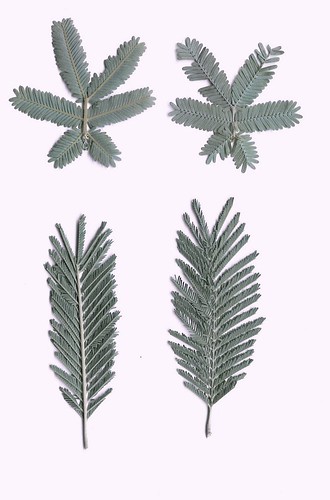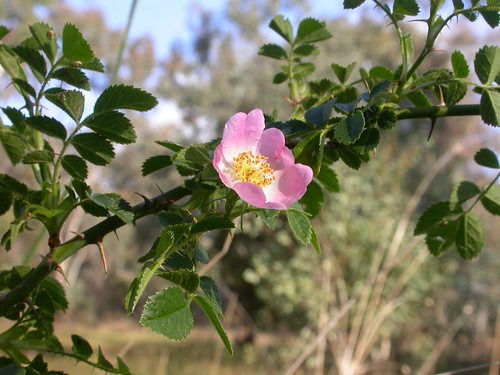
Hawthorn, Crataegus monogyna has lobed leaves and fleshy pome fruits (photo W.Pix)
Help tackle woody weeds on the northwest slope of Mount Majura. Come for a search and destroy session on Sunday, 15 February and rid the reserve of hawthorns and briar roses.
When: Sunday, 15 February, 9.00 am – 1 pm; come for an hour or more.
Where: Mt Majura nature park off Antill Street, North Watson
Meet: Nature park entrance roughly opposite Carotel, view this map
What: Cut-&-daub and frill Sweet Briar, hawthorns, Cootamundra wattles.
Bring: Sun protection, appropriate shoes, body-covering clothing; we provide tools and morning tea.
Novice weeders please come early for an introduction of the target weeds and the safe use of tools and herbicides.
Bring your friends and help promote the event, download this poster.
Enquiries: Email secretary@majura.org or Phone 6247 7515
To view common woody weeds of Mount Majura including the target weeds of the working party click on the FoMM Woody Weeds Flickr Group
Sweet Briar or Briar Rose, Rosa rubiginosa, a native plant of Europe and West Asia, is a major weed particularly of dry and hilly disturbed land. The seeds are spread by birds and foxes which eat the red fleshy fruits (rose hips). The Sweet Briar Rose was introduced to Australia in the early 1800’s as garden and hedge plant. The compound Briar Rose leaf comprise 5-9 leaflets with serrated margins.

Compound leaves of the introduced Cootamundra wattle (top) and the local Silver wattle (W.Pix).
Cootamundra wattle, Acacia baileyana is an Australian species, which does not naturally occur in Canberra. As many of the environmental woody weeds that we find in the nature reserve, Cootamundras were introduced to the ACT as an ornamental garden and landscape plant. The highly invasive species is now widespread in Namadgi National Park and the nature reserves of the ACT. The compound blueish-grey-green leaves resemble those of the local species Sliver wattle, Acacia dealbata, which native to the Mount Majura and Mount Ainslie nature reserves.
How to tell-apart from look-a-likes. The compound blueish-grey-green leaves of a Cootamundra wattle (top in the right panel) resemble those of the local species Sliver wattle. The leaves of Cootamundra wattles have 3-4 pairs of leaflets arranged along the leaf stem, the lowest pair is shorter and embraces the branch to which the leaf is attached. The leaves of Silver wattles have 8-20 pairs of leaflets arranged along to the leaf stem and the lowest pair does not embrace the branch.



